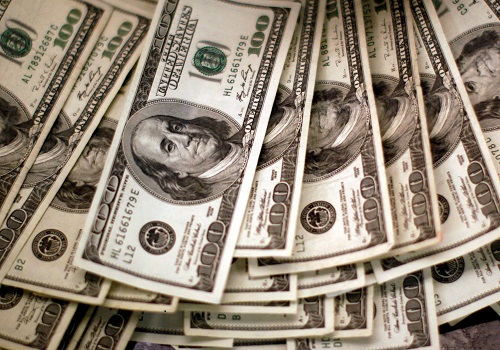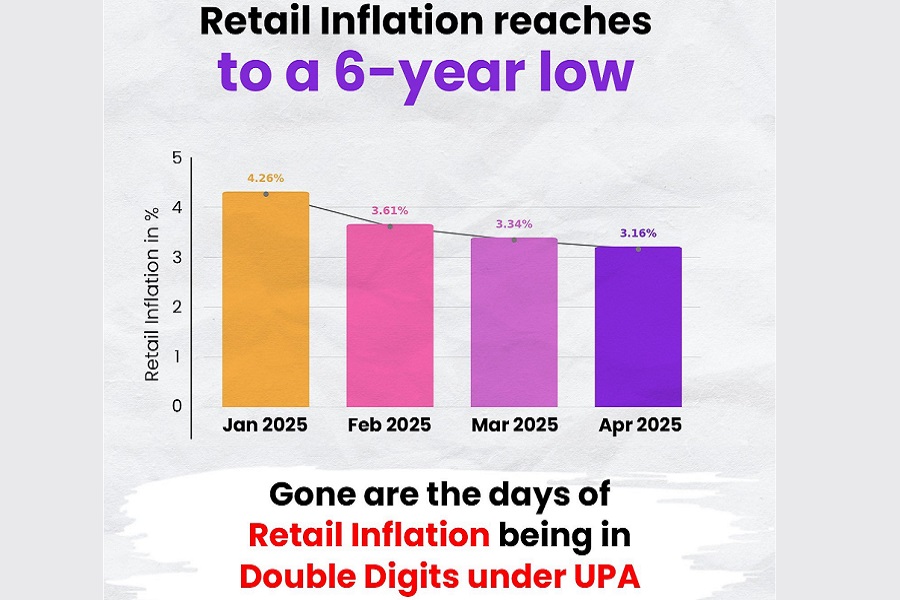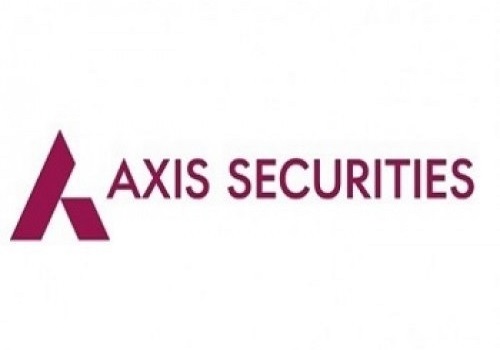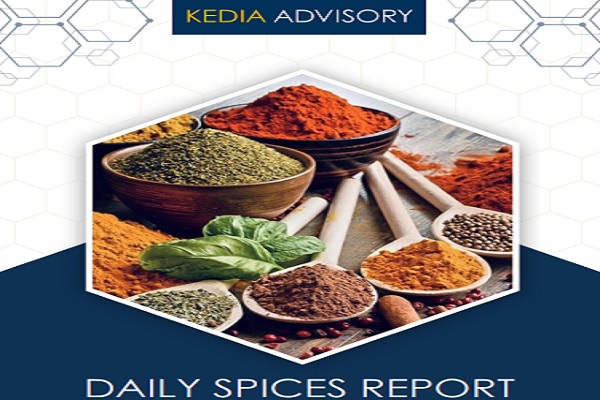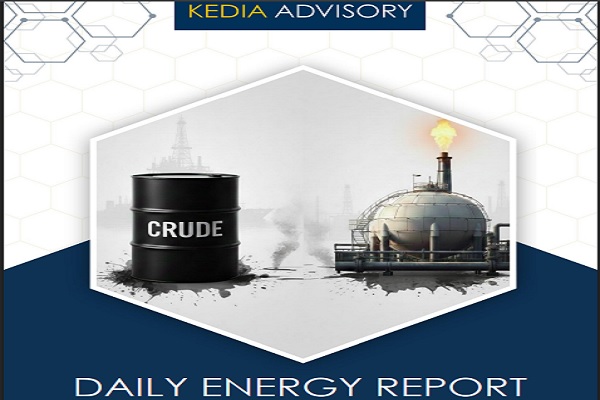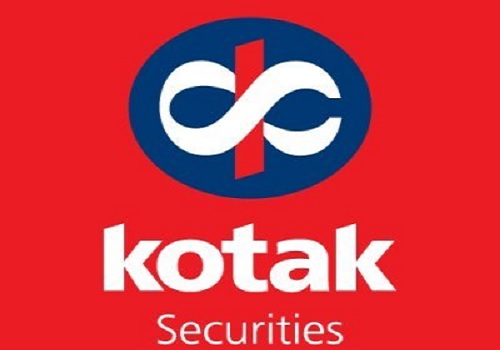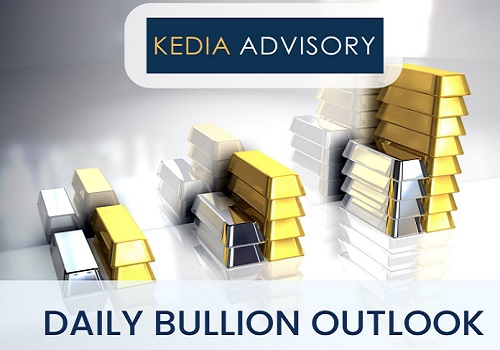Jeera trading range for the day is 19550-20870 - Kedia Advisory

Gold
Gold prices edged higher by 0.63% to close at 96,075, recovering from an earlier one-month low as a softer US dollar and fragile geopolitical backdrop revived some safe-haven interest. A series of positive developments in global trade negotiations limited the upside, with President Trump announcing a finalized US-China trade agreement and hinting at significant deals with India, Mexico, and Vietnam in the pipeline. The removal of Canada’s digital services tax, which had targeted American tech firms, further supported risk appetite, while easing tensions in the Middle East following the fragile Israel-Iran ceasefire also calmed immediate concerns. Despite this, physical gold demand in India remained muted as retail buyers continued to wait for deeper corrections, leading Indian dealers to maintain discounts of up to $18/oz over domestic prices—though slightly narrower than last week’s $27/oz discount. By contrast, premiums in China rose to $12–$14/oz, up from $10, signalling healthy demand in the world’s top gold-consuming market. In Singapore and Hong Kong, gold traded around par to a $2.20/oz premium, while Japan held steady with a modest $0.50/oz premium. Technically, gold is in short covering mode, with open interest down 12.61% to 13,018 lots while prices rebounded by 605. Gold now finds immediate support at 95,575, with a drop below exposing 95,075. On the upside, resistance is seen at 96,380, and a break above could test 96,685 in the coming sessions.
Trading Ideas:
* Gold trading range for the day is 95075-96685.
* Gold rises on weaker dollar after hitting 1-month low as tensions ease
* Progress in US-China trade talks boosted risk sentiment but limited gold’s safe-haven appeal.
* President Trump confirmed a trade deal with China and hinted at a major trade agreement with India soon.
Silver
Silver prices edged up 0.21% to settle at 105,449, supported by a weaker US dollar as traders grew more confident about a dovish Federal Reserve stance amid signs of economic softness and trade policy uncertainty. The dollar’s retreat came alongside rising expectations that the Fed may lower rates by 75 basis points this year, possibly starting as early as September, as US consumer spending unexpectedly dipped in May and the Chicago Business Barometer stayed well below the 50-mark for the 19th consecutive month. In the trade sphere, President Trump’s reciprocal tariff pause is set to expire next week, keeping markets alert to any policy twists, while Canada scrapped its digital services tax in a bid to ease tensions after Trump’s threats to end bilateral talks. On the supply-demand front, silver continues to benefit from a strong industrial outlook, with fabrication forecast to rise 3% to a new record high, driven by robust demand from green technologies. Total global silver demand is expected to stay near 1.20 billion ounces, but jewellery and silverware demand will likely drop by 6%, especially in India due to high local prices. Technically, silver shows signs of short covering, with open interest plunging by nearly 115% to 1,482 lots while prices rose by 221. Support lies at 104,910, with a drop possibly testing 104,365, while immediate resistance is seen at 105,895; a break above could push prices towards 106,335 in the near term.
Trading Ideas:
* Silver trading range for the day is 104365-106335.
* Silver prices rose as the US dollar weakened, supported by rising expectations of a dovish Federal Reserve.
* Markets anticipate a Fed rate cut as early as July, with a total of 75 basis points priced in for 2025.
* Trade tensions remain, with attention on Trump’s tariff deadline next week after the 90-day pause.
Crude oil
Crude oil prices settled slightly lower by 0.36% at 5,581, extending last week’s sharp declines amid signs of easing geopolitical risk and fresh supply-side developments. After plunging over 11% last week—the steepest weekly drop since March 2023—crude remains pressured as the fragile Israel-Iran truce continues to hold, calming fears of major supply disruptions from the Middle East. Adding to the bearish tone, reports suggest that OPEC+ is preparing to increase output by another 411,000 barrels per day in August, building on a similar hike already planned for July. On the demand side, US Energy Information Administration data showed a significant drawdown in inventories, with crude stocks falling by 5.836 million barrels, far exceeding expectations of a modest 0.75 million barrel drop. Stocks at the Cushing hub also fell by 464,000 barrels, while gasoline and distillate inventories decreased by over 2 million and 4 million barrels, respectively, highlighting robust refining activity and seasonal demand strength.Meanwhile, China’s Iranian oil imports rose sharply in June, boosted by strong buying from independent refiners ahead of potential supply risks. Technically, crude oil remains under fresh selling, with open interest rising 9.72% to 15,420 lots while prices edged lower by 20. Immediate support is pegged at 5,542, below which prices could test 5,502. On the upside, resistance is now seen at 5,633, and a break above may push prices towards 5,684 in the near term.
Trading Ideas:
* Crudeoil trading range for the day is 5502-5684.
* Crude oil fell as Mideast tensions ease, OPEC+ may boost output further
* Israel-Iran truce continues to hold, alleviating fears of a broader conflict that could disrupt crude flows from the region.
* Further weighing on prices, reports indicated that OPEC+ was set to boost output by 411,000 barrels per day in August.
Natural gas
Natural gas prices plunged by 7.41% to settle at 295.1, pressured by mild weather conditions and robust storage builds that outweighed supportive fundamentals seen earlier. Although above-normal temperatures are forecast to persist across the Lower 48 states through at least mid-July, the absence of last week’s peak heat has tempered both cooling and heating demand, resulting in subdued power burn compared to recent highs. On the supply side, average gas output in June edged up slightly to 105.6 bcfd from 105.2 bcfd in May, though it remains under March’s record of 106.3 bcfd as spring pipeline maintenance winds down. Meanwhile, gas flows to the eight major US LNG export plants averaged 14.2 bcfd in June—below the April record of 16 bcfd but showing slight recovery as some facilities resumed operations after maintenance outages. Storage data continues to weigh on sentiment. US utilities injected 96 bcf into storage for the week ending June 20, surpassing market expectations of 88 bcf and well above the five-year average build of 79 bcf. This marked the 10th straight week of larger-than-usual injections, lifting total inventories to 2.898 tcf, further reinforcing a bearish short-term outlook. Technically, the market remains under fresh selling pressure, with open interest spiking 40.17% to 24,049 lots while prices dropped by 23.6. Immediate support is seen at 287.5, with a break below exposing the 279.9 level. Resistance now sits at 309.2, and a decisive move above could push prices towards 323.3 in the near term.
Trading Ideas:
* Naturalgas trading range for the day is 279.9-323.3.
* Natural gas prices fell, weighed down by mild weather suppressing heating and cooling demand.
* Above-average temperatures are forecast through mid-July, but last week’s extreme heat is not expected to return.
* Output in June averaged 105.6 bcfd, slightly higher than May’s 105.2 bcfd but still below March’s record 106.3 bcfd.
Copper
Copper prices edged higher by 0.18% to settle at 894.6, supported by mounting concerns over tightening global supply despite mixed macroeconomic signals from top consumer China. Inventories continue to shrink across key exchanges, with London Metal Exchange (LME) copper stocks falling to 91,275 metric tons, their lowest level in nearly two years. This supply squeeze stems largely from traders rushing an estimated 400 kilotons of copper into the US market to get ahead of possible import tariffs under the Trump administration’s probe into copper imports launched earlier this year. The premium for LME cash copper over the three-month contract eased to $250/ton on Friday from $320/ton—the highest since November 2021—signaling ongoing near-term tightness even as backwardation moderated slightly. However, downside price pressure remains cushioned by the sustained threat of tariffs disrupting global flows and the limited smelting and processing capacity in the US, which could amplify domestic supply tightness if levies are enforced. Meanwhile, the latest ICSG bulletin revealed the global refined copper market flipped to a 50,000 metric tons deficit in April from a surplus in March, driven by lower production relative to steady consumption. Technically, the copper market remains under fresh buying, with open interest rising 4.03% to 7,956 lots while prices gained 1.65. Immediate support is now pegged at 891.4, with the next key level at 888.2. Resistance is seen at 896.4, and a decisive break higher could open the path to test 898.2 in the short term.
Trading Ideas:
* Copper trading range for the day is 888.2-898.2.
* Copper gains amid mounting concerns over tightening global supply.
* LME inventories fell again last week, dropping to 91,275 metric tons—the lowest level in nearly two years.
* SHFE showed copper stockpiles declined by 19.11% to 81,550 metric tons, hitting a one-month low.
Zinc
Zinc prices edged lower by 0.58% to settle at 258.35, weighed down by persistent concerns over sluggish demand in China and broader macroeconomic headwinds. Fresh factory data showed China’s manufacturing activity contracted for a third consecutive month in June, though the pace of decline moderated, hinting that government stimulus measures might be starting to cushion the slowdown. On the supply side, the global zinc market surplus narrowed slightly to 16,000 metric tons in April, down from 23,400 tons in March, according to the International Lead and Zinc Study Group. For the first four months of 2025, the cumulative surplus reached 151,000 tons, still lower than the 176,000 tons surplus recorded during the same period last year, signaling some tightening in supply-demand balance. China’s refined zinc production for May dipped by 1% MoM, though it was up by around 2% YoY. Output was pressured by planned and unexpected smelter maintenance across major zinc-producing regions like Henan, Anhui, Guangxi, and Shaanxi. Meanwhile, production from Teck Resources' Red Dog Mine, the world’s largest, dropped 20% annually, and Australia’s Nyrstar is slashing output by 25% this year due to uncompetitive treatment charges driven by ore shortages—factors that could lend underlying support to prices. Technically, the zinc market remains under long liquidation, with open interest declining by 3.44% to 3,589 lots, while prices slipped by 1.5. Immediate support is seen at 257.4, with a break lower exposing the 256.4 mark. Resistance is pegged at 260.2, and a move above could push prices towards 262 in the near term.
Trading Ideas:
* Zinc trading range for the day is 256.4-262.
* Zinc dropped as investors digested mixed factory data from China.
* China’s manufacturing activity shrank for a third straight month in June, though at a slower pace than previous months.
* Inventories in warehouses monitored by the Shanghai Futures Exchange gained by 1.8% from last Friday.
Aluminium
Aluminium prices edged higher by 0.38% to settle at 248.8, buoyed by persistent supply risks and optimism over sustained manufacturing demand despite mixed signals from the physical market. Supply concerns remain elevated as uncertainty over bauxite supply continues due to ongoing disagreements between the Guinean government and Emirates Global Aluminium, threatening mining licenses in Guinea—one of the world’s largest bauxite sources. Production data from China showed resilience, with May output rising by 5% YoY to 3.83 million metric tons, and cumulative output for the first five months increasing by 4% YoY to 18.59 million metric tons, according to the National Bureau of Statistics. However, the physical premium data shows signs of softening demand. Japanese buyers agreed to a sharply lower premium of $108 per ton for Q3 shipments, down 41% from the previous quarter and marking the lowest level since early 2024. Despite this, LME and SHFE combined inventories remain 60% lower YoY, which continues to lend underlying price support amid tighter visible stocks. Technically, the aluminium market is under fresh buying, with open interest rising by 3.06% to 4,273 lots while prices gained 0.95. Immediate support lies at 247.9, with the next level at 246.8. Resistance is now seen at 249.6, and a break above could open the way to test 250.2 in the near term.
Trading Ideas:
* Aluminium trading range for the day is 246.8-250.2.
* Aluminium prices rose as concerns over raw material supply resurfaced.
* Combined LME and SHFE aluminium inventories remain about 60% lower compared to the same time last year.
* China's aluminium production rose by 5.0 % to 3.83 million metric tons in May from a year earlier.
Cottoncandy
Cottoncandy prices recovered by 1.6% to close at 53,890, supported by short covering after a recent dip triggered by a slight upward revision in India’s cotton output estimate. The Cotton Association of India (CAI) marginally raised production to 291.35 lakh bales from 291.30 lakh bales, driven by better-than-expected output in Odisha. India’s export outlook also appears weak, with CAI reducing its export forecast by 1 lakh bale to 15 lakh bales, sharply down from 28.36 lakh bales last year. Meanwhile, imports remain notably higher, with 27.5 lakh bales already imported by April—more than double last season’s figure—adding to domestic supplies. Ending stocks are also expected to climb to 32.54 lakh bales by September, up from 30.19 lakh bales a year ago, indicating a comfortable supply scenario ahead. Globally, the USDA’s June WASDE report showed a slight tightening in the world cotton balance sheet for 2025–26 as global production was revised down by 800,000 bales, mainly due to cuts in India, the US, and Pakistan. The US crop is forecast to shrink to 14 million bales, marking one of the smallest harvests in the past decade due to weather disruptions in the Delta region. Technically, the market is under short covering as open interest fell by 1.61% to 61 lots while prices gained 850. Immediate support is at 53,580, below which prices may test 53,280. Resistance is now seen at 54,100, and a break above could lift prices towards 54,320 in the short term.
Trading Ideas:
* Cottoncandy trading range for the day is 53280-54320.
* Cotton gains on short covering after prices dropped prices dropped amid slight upward revision in India’s output estimate.
* CAI cut consumption forecast by 8 lakh bales to 307 lakh for the 2024–25 season.
* Cotton exports expected to fall to 15 lakh bales, down 13.36 lakh from last year.
* In Rajkot, a major spot market, the price ended at 26183.6 Rupees gained by 0.37 percent.
Turmeric
Turmeric futures settled lower by 0.54% at 14,018 as traders booked profits amid signs of an expected increase in acreage driven by favourable rains and supportive sowing weather this season. Daily arrivals rose modestly to 13,660 quintals from 11,940 quintals, reflecting a slight uptick in supply in key mandis. Preliminary estimates suggest turmeric acreage for 2024–25 may rise by 15–20%, as relatively lower profitability in competing crops is expected to keep farmers inclined toward turmeric. Despite this, the downside remains capped due to concerns over actual output. Although the area under turmeric is seen expanding to 3.30 lakh hectares, up 10% from last year’s 3 lakh hectares, untimely rains and dry spells during critical growth phases are likely to curb yield gains. The Nanded region is particularly facing quality challenges, with reports of small rhizomes and crop rot threatening output. Last year, India produced 10.75 lakh tonnes of turmeric, and new season yields are expected to be 10–15% lower. Meanwhile, robust demand for fresh arrivals continues to support the market. In the Duggirala market, traders are offering a price premium for new stock due to its superior quality, which is meeting buyer expectations. Technically, the market is under fresh selling pressure, with open interest increasing by 1.71% to 17,535 lots, suggesting new shorts at current levels. Turmeric finds immediate support at 13,918, with further weakness likely to test 13,816. Resistance is placed at 14,160, and a breakout could push prices towards 14,300 in the near term.
Trading Ideas:
* Turmeric trading range for the day is 13816-14300.
* Turmeric prices dropped due to expected increase in acreage.
* Turmeric acreage is expected to increase by 15-20% this season, supported by low competitive crop prices.
* In April 2025 around 14,956.80 tonnes were exported as against 14,109.10 tonnes in April 2024 showing a rise of 6%.
* In Nizamabad, a major spot market, the price ended at 14403.3 Rupees gained by 0.01 percent.
Jeera
Jeera futures edged up marginally by 0.10% to settle at 20,115, supported by firm export inquiries and easing geopolitical tensions, though the upside remained capped due to slack domestic and overseas demand as the retail season has ended. Current estimates suggest that Indian farmers still hold about 20 lakh bags of cumin, but only 3–4 lakh bags are expected to be traded by season-end, leaving a substantial carry-forward stock of about 16 lakh bags. While the sowing area has declined this season, India’s cumin production is still estimated at 90–92 lakh bags, lower than last year’s 1.10 crore bags, thanks to favourable crop conditions and steady sowing. Production in Gujarat is pegged at 42–45 lakh bags and in Rajasthan at 48–50 lakh bags. Internationally, supply prospects are mixed. China’s production estimates were earlier at 1 lakh tonnes, but adverse weather has trimmed output to 70–80 thousand tonnes. Syria’s crop is expected at 9–10 thousand tonnes, Turkey at 10–11 thousand tonnes, and Afghanistan at 10–12 thousand tonnes. On the trade front, India exported 19,719.60 tonnes of jeera in April 2025, sharply down by 48.11% year-on-year but 13.74% higher than March 2025 levels, indicating some revival. Technically, jeera remains under short covering with open interest falling 6.73% to 5,235 lots, while prices gained by 20. Immediate support is seen at 19,830, below which prices could test 19,550, while resistance is pegged at 20,490, and a breakout could lift prices to 20,870.
Trading Ideas:
* Jeera trading range for the day is 19550-20870.
* Jeera gained on strong export demand and easing geopolitical concerns.
* However upside seen limited due to weak domestic and export demand post retail season.
* Total arrivals witnessed a marginal increase to 12,000 bags (55 kg each) as against 11,800 bags on the previous day.
* In Unjha, a major spot market, the price ended at 20785.75 Rupees dropped by -0.72 percent.
Views express by all participants are for information & academic purpose only. Kindly read disclaimer before referring below views







